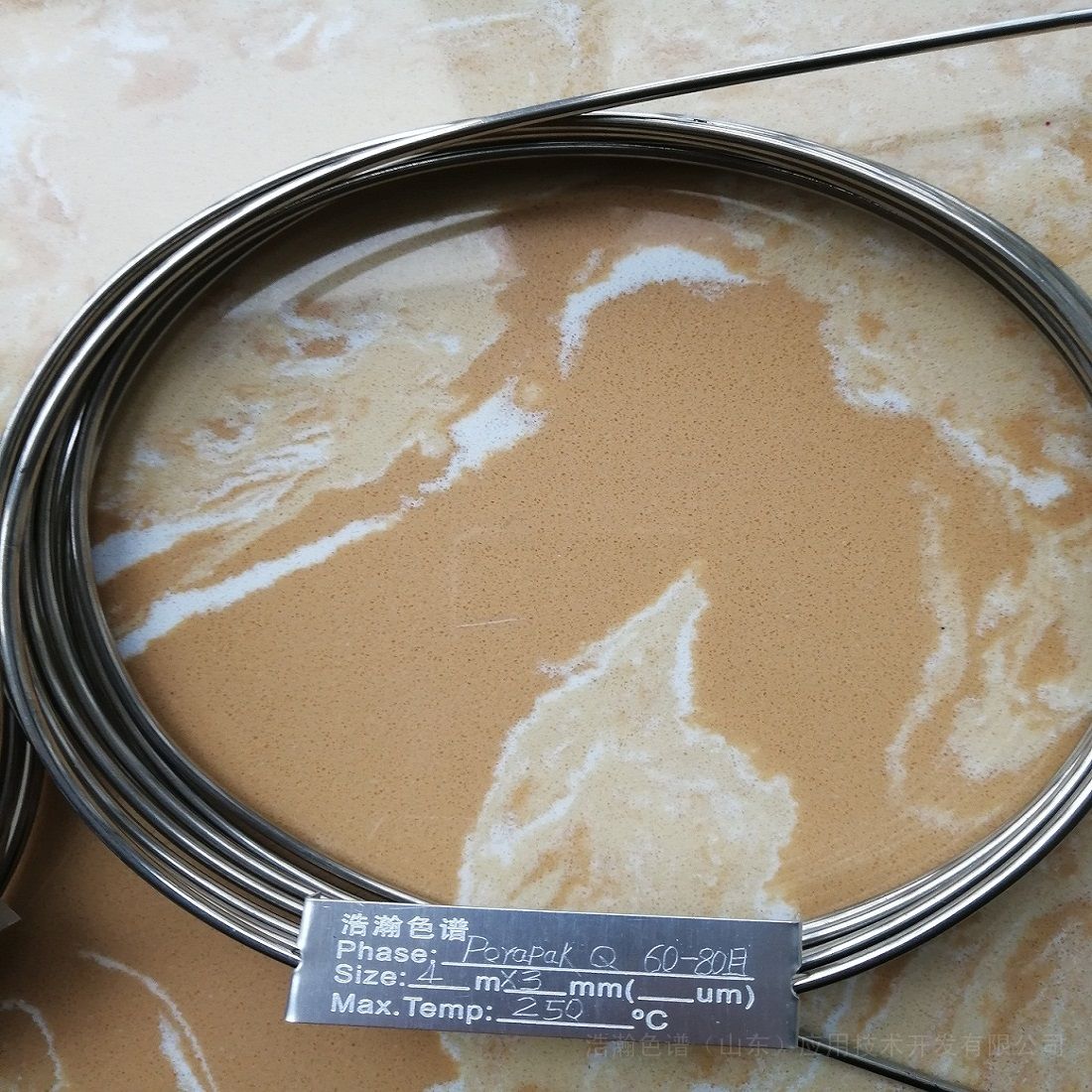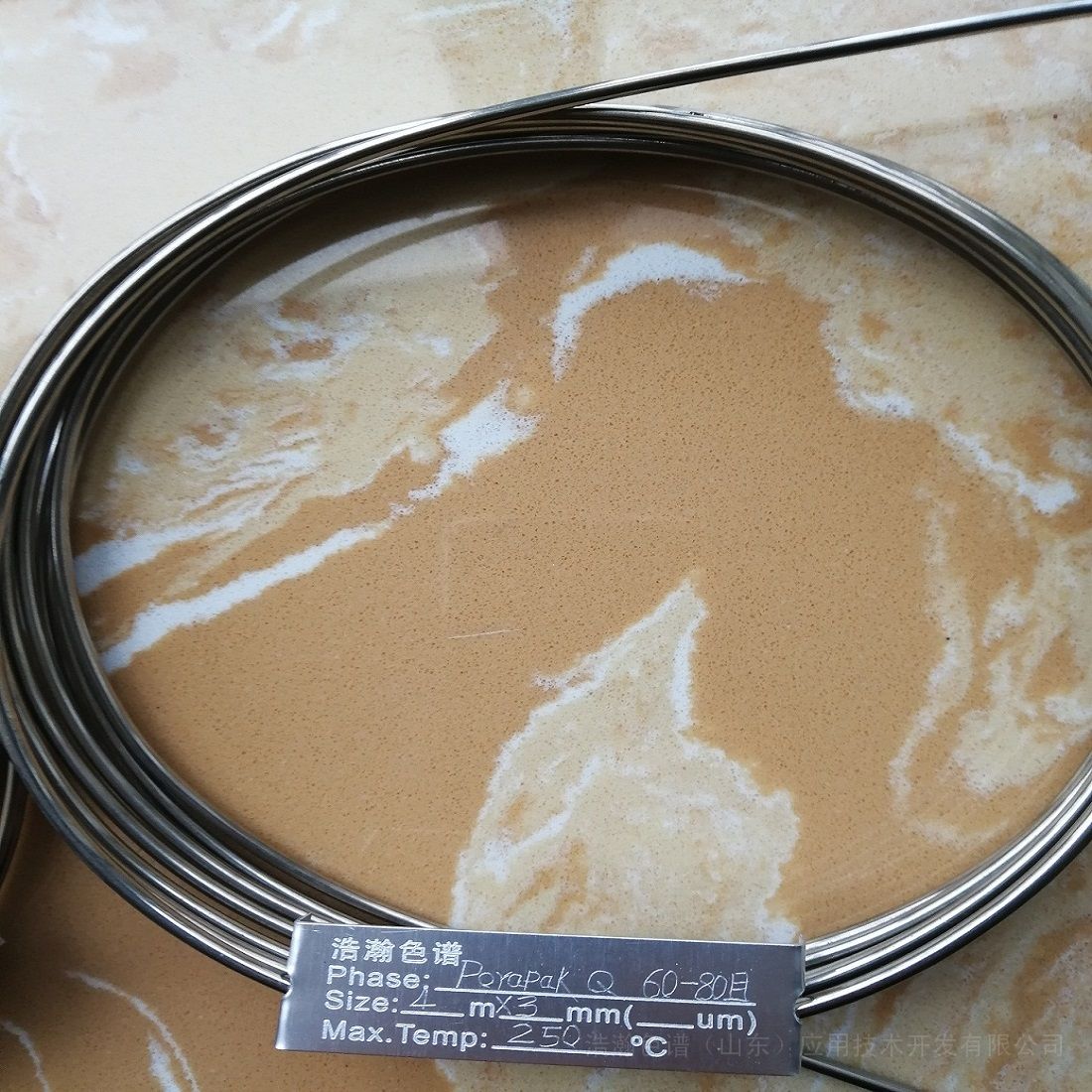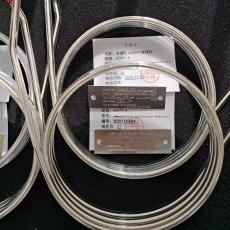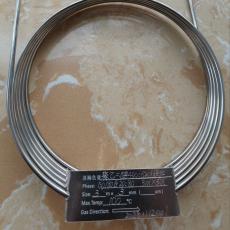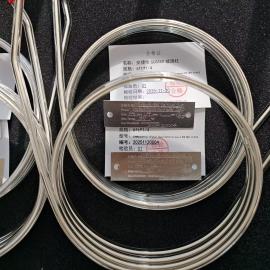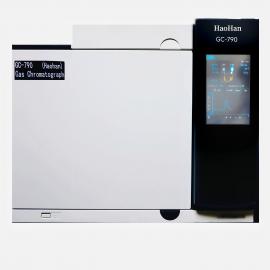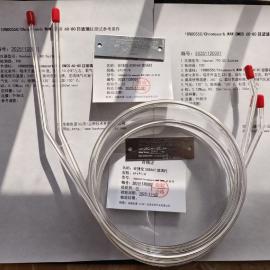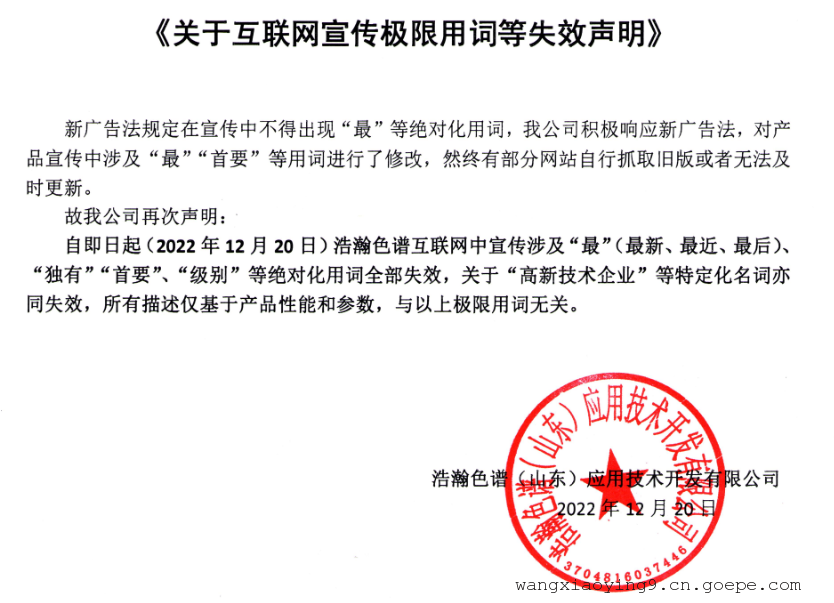HJ/T 37-1999 固定污染源排气中丙烯腈的测定 气相色谱法
1 适用范围
1.1 本标准适用于固定污染源有组织排放和无组织排放的丙烯腈测定。
1.2 当采样体积为30L时,方法的检出限为0.2mg/m3。方法的定量测定浓度范围为0.26-33.0mg/m3。
2 方法原理
丙烯腈(CH2=CHCH2CN)用活性炭常温吸附富集,再经二硫化碳常温解吸,解吸液中各组分通过色谱柱得到分离后进人氢火焰离子化检测器(FID),从测得的丙烯腈色谱峰高(或面积),对解吸液中丙烯腈浓度定量,*后由解吸液体积、浓度和采样体积计算出气体样品中丙烯腈的浓度。
3 引用标准
下列标准所包含的条文,通过在本标准中引用而构成为本标准的条文:
GB 16297-1996 大气污染物综合排放标准
GB 16157-1996 固定污染源排气中颗粒物测定和气态污染物采样方法
4 试剂和材料
4.1 丙烯腈:色谱纯(或分析纯,但必须对丙烯腈无色谱干扰峰)。
4.2 二硫化碳:分析纯(对丙烯腈的色谱测定无干扰峰,否则需进行蒸馏,取46-47℃的馏分)。
4.3 气相色谱固定相:GDX-502, 60-80目。
4.4 氮气:纯度99.99%,并用分子筛或活性氧化铝净化。
4.5 氢气:纯度99.9%,并用分子筛或活性氧化铝净化。
4.6 空气。
4.7 活性炭吸附管
活性炭吸附管的结构如图1所示。玻璃管的两端熔封密闭,并配有两个塑胶帽盖,以备采样完毕后盖紧密闭用。管内填装活性炭粒度为20-40目,A段含100mg, B段含50mg。 A段活性炭前的玻璃棉上压着一个V字型弹簧钩,以免炭粒松动。活性炭应对气态丙烯腈有很强的吸附能力,并可用二硫化碳解吸被吸附的丙烯腈。目前市售的用于采集空气中有机蒸气,并以二硫化碳作解吸溶剂的活性炭吸附管能满足要求。
HJ/T 37-1999 Determination of acrylonitrile in exhaust gas from stationary pollution sources-Gas chromatography
1 Scope of application
1.1 This standard is applicable to the determination of acrylonitrile in the organized and unorganized emission of fixed pollution sources.
1.2 When the sampling volume is 30L, the detection limit of the method is 0.2mg/m3. The quantitative determination of the method is in the concentration range of 0.26-33.0 mg/m3.
2 Principles of the method
Acrylonitrile (CH2=CHCH2CN) is adsorbed and enriched with activated carbon at room temperature, and then desorbed by carbon disulfide at room temperature. The components in the desorbed liquid are separated by a chromatographic column and then entered into a hydrogen flame ionization detector (FID). The peak height (or area) is used to quantify the concentration of acrylonitrile in the desorbed liquid. Finally, the concentration of acrylonitrile in the gas sample is calculated from the volume, concentration and sampling volume of the desorbed liquid.
3 Reference Standards
The following standards contain provisions which, through reference in this standard, constitute provisions of this standard:
GB 16297-1996 Comprehensive emission standard of air pollutants
GB 16157-1996 Determination of particulate matter in exhaust gas from stationary pollution sources and sampling methods for gaseous pollutants
4 Reagents and Materials
4.1 Acrylonitrile: chromatographically pure (or analytically pure, but must have no chromatographic interference peaks for acrylonitrile).
4.2 Carbon disulfide: analytically pure (no interfering peaks for the chromatographic determination of acrylonitrile, otherwise it needs to be distilled, and the fraction at 46-47 °C is taken).
4.3 Gas chromatography stationary phase: GDX-502, 60-80 mesh.
4.4 Nitrogen: purity 99.99% and purified with molecular sieve or activated alumina.
4.5 Hydrogen: purity 99.9% and purified with molecular sieve or activated alumina.
4.6 Air.
4.7 Activated carbon adsorption tube
The structure of the activated carbon adsorption tube is shown in Figure 1. Both ends of the glass tube are sealed and sealed, and two plastic caps are provided in case the caps are tightly closed after sampling. The particle size of the activated carbon filled in the tube is 20-40 mesh, the A section contains 100 mg, and the B section contains 50 mg. A V-shaped spring hook is pressed on the glass wool in front of the A-stage activated carbon to prevent the carbon particles from loosening. Activated carbon should have a strong adsorption capacity for gaseous acrylonitrile, and carbon disulfide can be used to desorb the adsorbed acrylonitrile. Currently available activated carbon adsorption tubes for collecting organic vapors in the air and using carbon disulfide as the desorption solvent can meet the requirements.
 扫一扫,手机浏览
扫一扫,手机浏览
